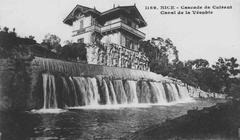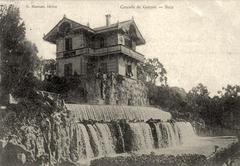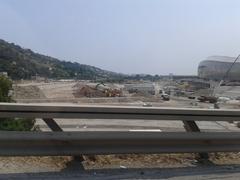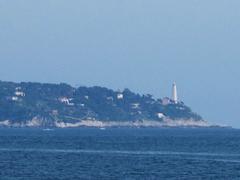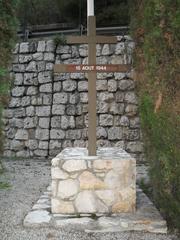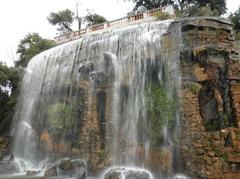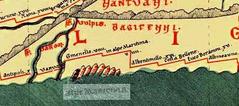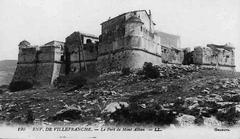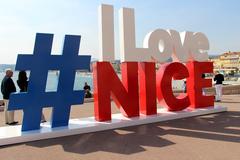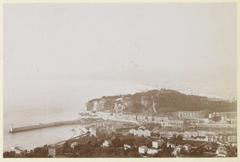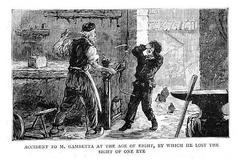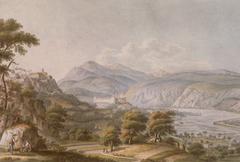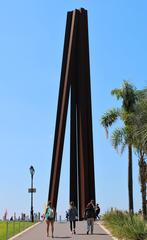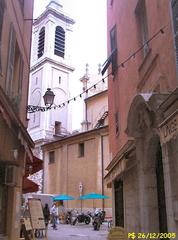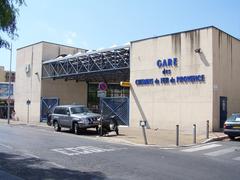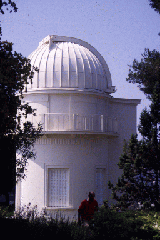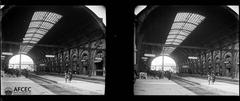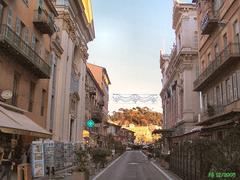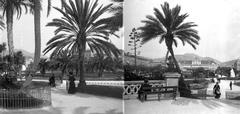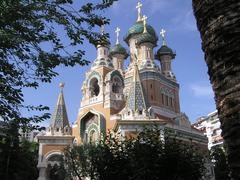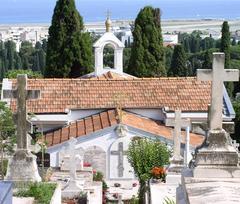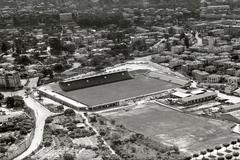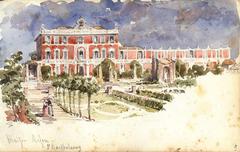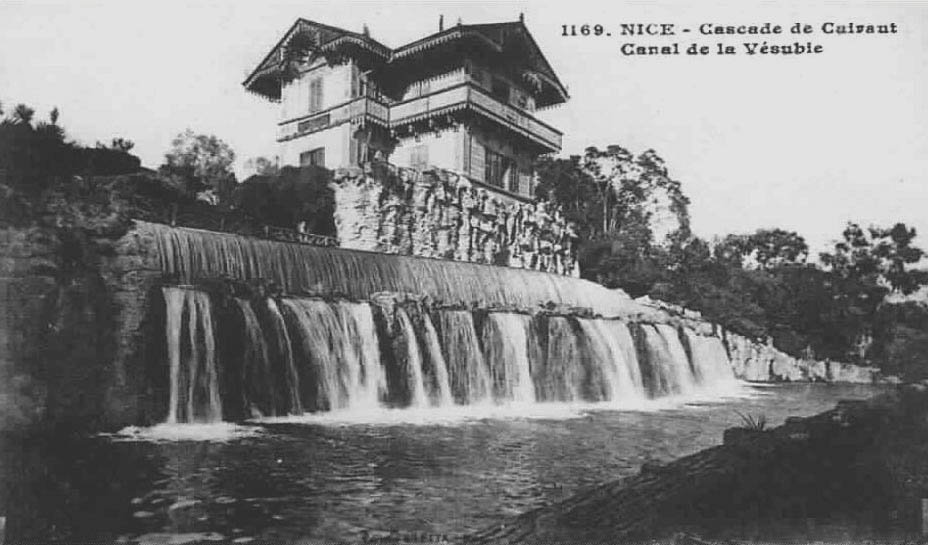
Visiting Hours, Tickets, and Historical Sites: Comprehensive Guide to Maison de Garde in Nice, France
Publication Date: 23/07/2024
Introduction to Maison de Garde
Discover the allure of Maison de Garde, a historic guardhouse in Nice, France, that dates back to the 18th century. This architectural marvel offers a window into the past, showcasing the military engineering and strategic foresight of its time. Originally constructed to protect and oversee the region, Maison de Garde’s robust stone walls and narrow windows bear testament to its defensive purpose. Over the centuries, it has evolved from a military installation to a cultural landmark, now serving as a beacon of heritage and education. Whether you’re a history enthusiast, architecture aficionado, or a curious traveler, Maison de Garde promises a rich and immersive experience. With detailed exhibits, guided tours, and a strategic location near other notable attractions in Nice, the site is a must-visit for anyone exploring the city (Nice Tourism).
Contents Overview
- Introduction
- History and Significance of Maison de Garde
- Origins and Early History
- Architectural Significance
- Role in Regional Defense
- Transition to Civilian Use
- Practical Visitor Information
- Visiting Hours and Tickets
- Nearby Attractions
- Travel Tips
- Preservation and Restoration Efforts
- Cultural and Educational Significance
- Impact on Local Tourism
- Future Prospects
- FAQ
- Conclusion
History and Significance of Maison de Garde
Origins and Early History
The Maison de Garde, located in Nice, France, is a historical structure with roots tracing back to the 18th century. Originally constructed as a guardhouse, it served as a strategic point for monitoring and protecting the region. The building’s architecture reflects the military style of the period, characterized by robust stone walls and narrow windows designed for defense. The Maison de Garde was part of a network of similar structures that dotted the landscape, each playing a crucial role in the security and administration of the area.
Architectural Significance
The architectural design of the Maison de Garde is a testament to the military engineering of the time. The building features thick stone walls, which provided protection against attacks and the elements. The narrow windows, or loopholes, were designed to allow guards to observe and fire upon potential intruders while minimizing their exposure. The structure’s layout includes a central courtyard, which served as a gathering and operational space for the guards. This design is indicative of the practical and strategic considerations that influenced military architecture in the 18th century.
Role in Regional Defense
The Maison de Garde played a pivotal role in the defense of Nice and its surrounding areas. Positioned strategically, it allowed guards to monitor key routes and provide early warnings of any approaching threats. The guardhouse was part of a broader defensive network that included other similar structures and fortifications. This network was essential in maintaining the security and stability of the region, particularly during periods of conflict and unrest. The Maison de Garde’s role in regional defense underscores its historical importance and the strategic thinking of the time.
Transition to Civilian Use
As the political and military landscape of France evolved, the Maison de Garde transitioned from a military installation to a civilian structure. By the 19th century, the need for such guardhouses diminished, and many were repurposed for civilian use. The Maison de Garde in Nice underwent renovations to accommodate its new role, which included serving as a residence and later as a cultural and historical site. This transition reflects broader changes in French society and the shifting priorities from military defense to civilian development and heritage preservation.
Practical Visitor Information
Visiting Hours and Tickets
Maison de Garde is open to visitors throughout the year. The typical visiting hours are from 10:00 AM to 6:00 PM, with extended hours during the summer season. Tickets can be purchased at the entrance or online through the official website. General admission is €10, with discounts available for students, seniors, and children. Guided tours are available at an additional cost.
Nearby Attractions
While in Nice, consider visiting other historical and cultural sites such as the Promenade des Anglais, Castle Hill, and the Marc Chagall National Museum. These attractions are located within a short distance from Maison de Garde and offer a well-rounded experience of the city’s heritage and beauty.
Travel Tips
- Accessibility: Maison de Garde is accessible to visitors with disabilities, with ramps and elevators available.
- Photography: The site offers several picturesque spots perfect for photography, particularly the central courtyard and the panoramic views from the upper levels.
- Special Events: Check the official website for information on special events and exhibitions held at Maison de Garde.
Preservation and Restoration Efforts
In recent years, significant efforts have been made to preserve and restore the Maison de Garde. These efforts are aimed at maintaining the structural integrity of the building while also enhancing its historical and cultural value. Restoration projects have focused on repairing the stonework, restoring original architectural features, and updating the interior to accommodate visitors. These efforts are crucial in ensuring that the Maison de Garde remains a valuable historical site for future generations. The preservation work is often supported by local and national heritage organizations, highlighting the building’s importance in French history (Nice Heritage Organization).
Cultural and Educational Significance
Today, the Maison de Garde serves as a cultural and educational site, offering visitors a glimpse into the region’s past. The building houses exhibits and displays that detail its history, architectural features, and role in regional defense. Educational programs and guided tours are available, providing visitors with in-depth knowledge about the site’s significance. The Maison de Garde also hosts cultural events and activities, further enhancing its role as a community hub. These initiatives help to promote an understanding and appreciation of the region’s heritage (Nice Cultural Events).
Impact on Local Tourism
The Maison de Garde is a significant attraction in Nice, drawing tourists interested in history, architecture, and culture. Its historical significance and well-preserved state make it a must-visit site for those exploring the region. The building’s inclusion in local tourism itineraries has a positive impact on the local economy, contributing to the growth of the tourism sector. The Maison de Garde’s appeal is further enhanced by its proximity to other historical and cultural sites in Nice, making it an integral part of the city’s tourism landscape (Nice Tourism).
Future Prospects
Looking ahead, the future of the Maison de Garde appears promising, with ongoing efforts to enhance its accessibility and visitor experience. Plans are in place to introduce new exhibits, interactive displays, and digital resources that will provide visitors with a more immersive experience. Additionally, collaborations with educational institutions and cultural organizations aim to expand the site’s reach and impact. These initiatives are designed to ensure that the Maison de Garde remains a vibrant and relevant historical site, contributing to the preservation and promotion of Nice’s rich heritage (Future of Maison de Garde).
FAQ
What are the visiting hours for Maison de Garde?
Maison de Garde is typically open from 10:00 AM to 6:00 PM, with extended hours during the summer season.
How much do tickets cost?
General admission is €10, with discounts available for students, seniors, and children. Guided tours are available at an additional cost.
Is Maison de Garde accessible to visitors with disabilities?
Yes, the site is accessible to visitors with disabilities, with ramps and elevators available.
Are there guided tours available?
Yes, guided tours are available and can provide a more in-depth understanding of the site’s history and significance.
Conclusion
The Maison de Garde stands as a significant historical and cultural landmark in Nice, France. Its origins as a military guardhouse, architectural features, and role in regional defense highlight its importance in the region’s history. The building’s transition to civilian use, preservation efforts, and current role as a cultural and educational site underscore its enduring value. As a key attraction in Nice, the Maison de Garde continues to draw visitors and contribute to the local tourism industry. Ongoing and future initiatives aim to enhance its accessibility and visitor experience, ensuring that it remains a vital part of Nice’s heritage for years to come.
Sources and Further Reading
- Visit Maison de Garde - Historical Significance, Visiting Hours, and Tickets in Nice, France
- Ultimate Guide to Maison de Garde - Visiting Hours, Tickets, and Top Tips
- Promenade des Anglais
- Castle Hill
- Old Town
- Musée Matisse
- Marc Chagall National Museum
- Place Masséna
- Nice Opera House
- Jardin Albert 1er
- Nice Festivals
